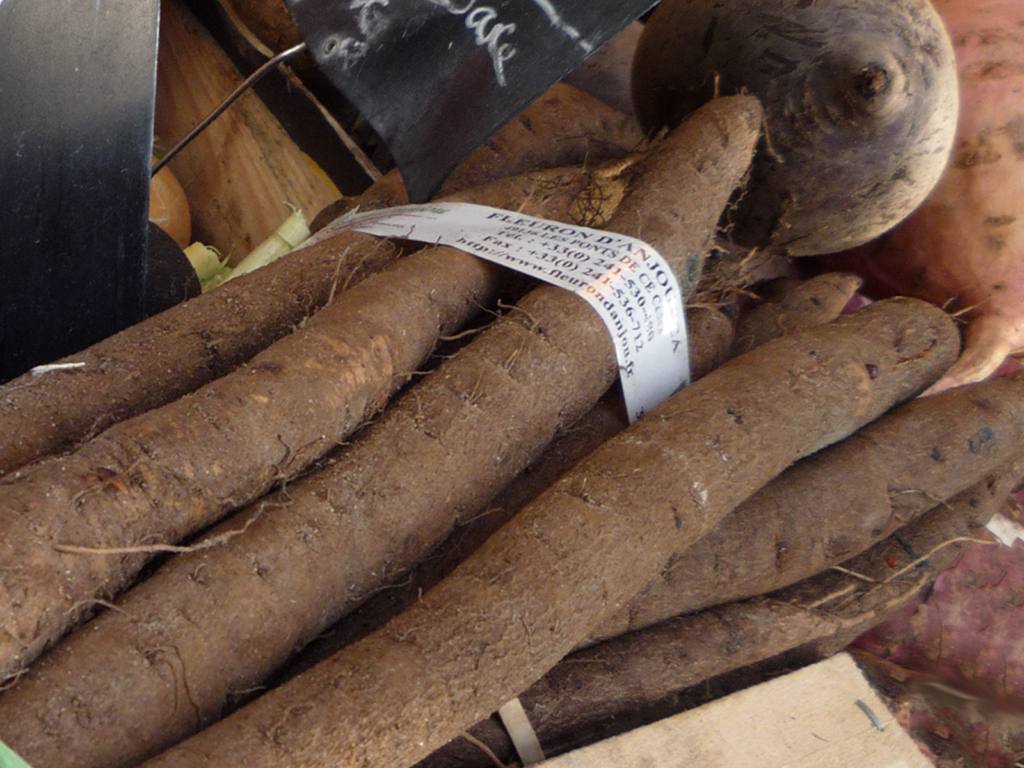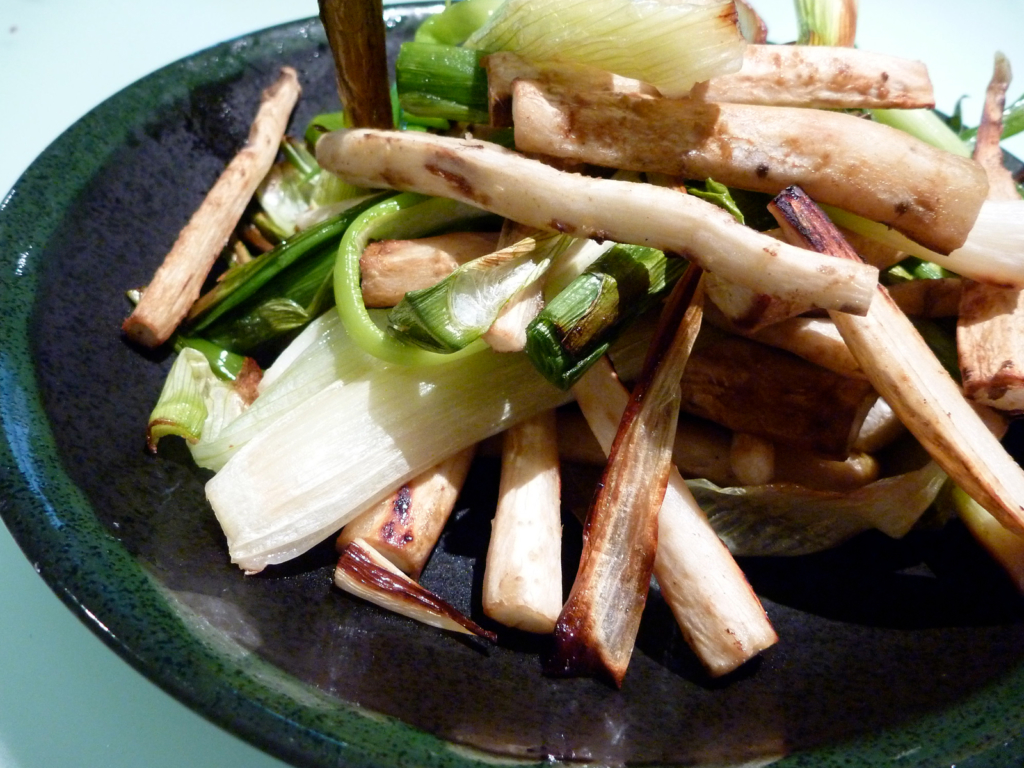Pronounced sal-si-fee, this little known and underappreciated root vegetable is worth seeking out.
What is it?
Salsify are the edible roots of the tragopogon porrifolius flower which is part of the dandelion family. The plant is native to southern Europe and North Africa but is now found in large swaths of North America, Australia, and Southern Africa. Salsify was extremely popular in Victorian England but fell out of favor around the turn of the century.

While the popularity of other root vegetables like potatoes could have caused it to become less popular, the external appearance of salsify certainly doesn’t do it any favors. It’s far from the prettiest vegetable in the fresh produce aisle and at first glance, salsify resembles a collection of grubby tree branches. Its unappealing and darn right confusing appearance would turn off even the most curious of foodies. Once cleaned and peeled, however, it takes on the more palatable appearance of the similar tasting parsnip.
There are two commonly used salsify varieties, black and white. The white variety has a light brown color and more closely resembles parsnips. Scorzonera or black salsify has black purplish skin and a stronger taste.
Flavor and uses

Salsify is often described as tasting like oysters and is commonly referred to as the Oyster Plant. The degree to which the plant tastes like the famous shellfish seems to be in the eye of the beholder and many have disputed this description. However, salsify does have a pronounced umami flavor when roasted or fried which may account for the oyster connection. Others have described it as tasting like asparagus or artichokes with hints of liquorice.
Salsify has much in common with other root vegetables and can be cooked in much the same way as potatoes, carrots, and parsnips.The flavor of salsify tends to be quite mild which means it can be paired well with a wide variety of foods without overwhelming the palate.
Feature Image: Maria Gutebring from Pixabay



